The Western Digital Blue (1TB) SSD Review: WD Returns to SSDs
by Billy Tallis on October 11, 2016 8:00 AM EST- Posted in
- SSDs
- Storage
- Western Digital
- SanDisk
Mixed Random Read/Write Performance
The mixed random I/O benchmark starts with a pure read test and gradually increases the proportion of writes, finishing with pure writes. The queue depth is 3 for the entire test and each subtest lasts for 3 minutes, for a total test duration of 18 minutes. As with the pure random write test, this test is restricted to a 16GB span of the drive, which is empty save for the 16GB test file.
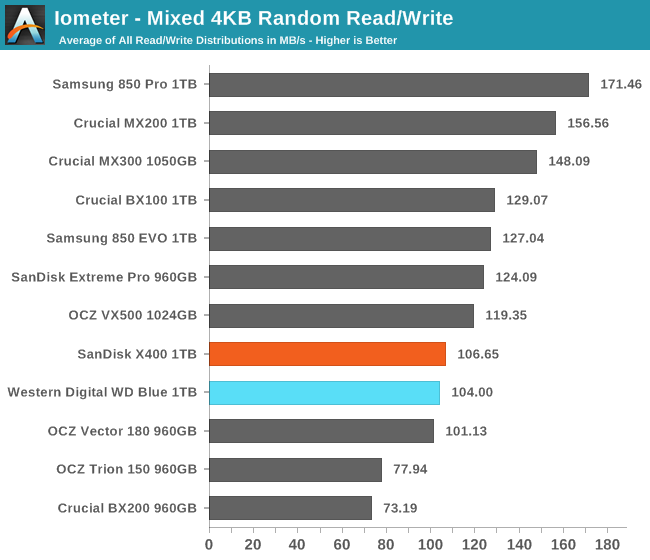
Like the SanDisk X400, the WD Blue performs better on the mixed random I/O test than competing planar TLC drives and about the same as the slowest MLC drives.
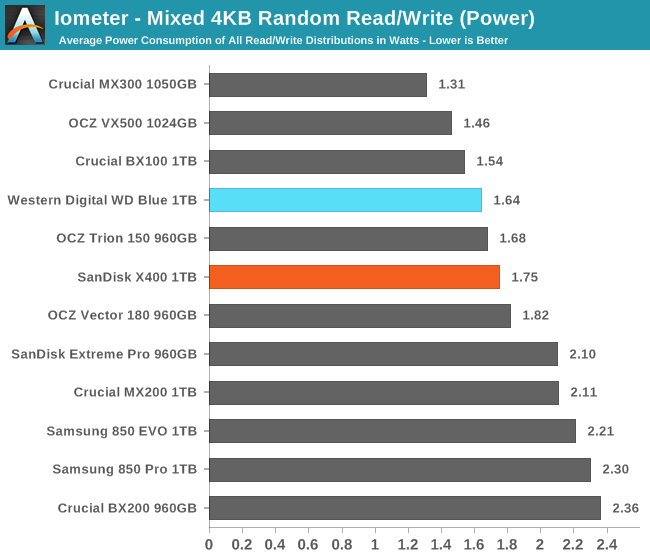
The WD Blue once again slightly raises the efficiency standards for planar TLC, but is still nowhere near as efficient as 3D TLC or MLC.
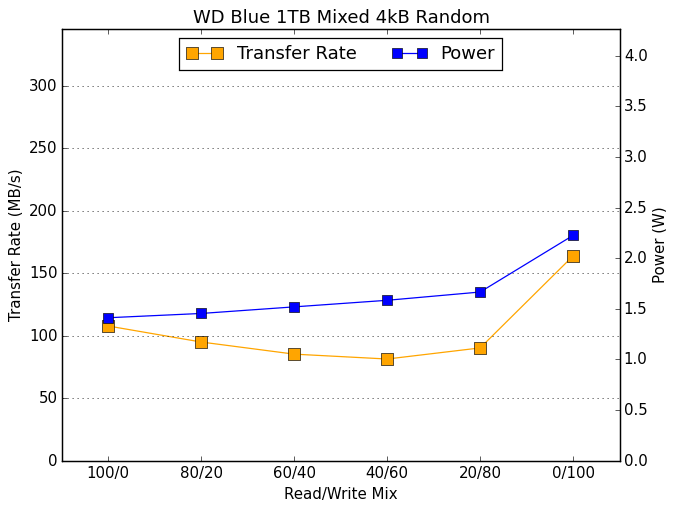 |
|||||||||
The WD Blue starts the mixed random I/O test with a pretty good random read speed, but performance declines as writes are added to the mix until near the end of the test, where the jump in the last segment of the test is not as large as what most drives experience.
Mixed Sequential Read/Write Performance
The mixed sequential access test covers the entire span of the drive and uses a queue depth of one. It starts with a pure read test and gradually increases the proportion of writes, finishing with pure writes. Each subtest lasts for 3 minutes, for a total test duration of 18 minutes. The drive is filled before the test starts.
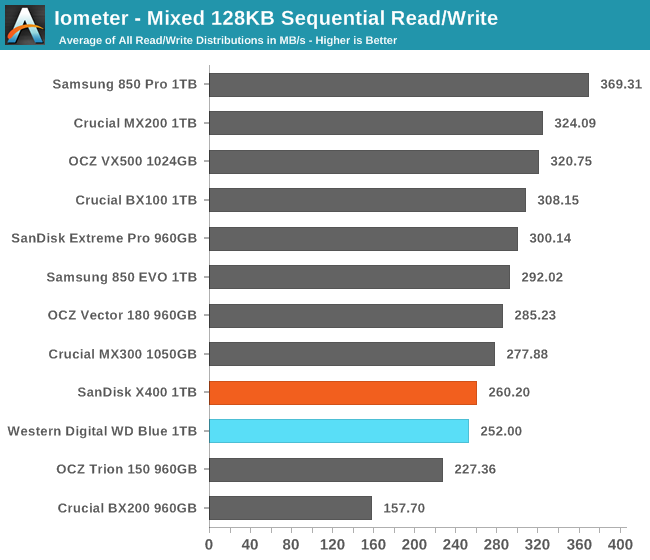
The WD Blue performs above average for a planar TLC SSD on the mixed sequential I/O test, but is not competitive with MLC or 3D TLC.
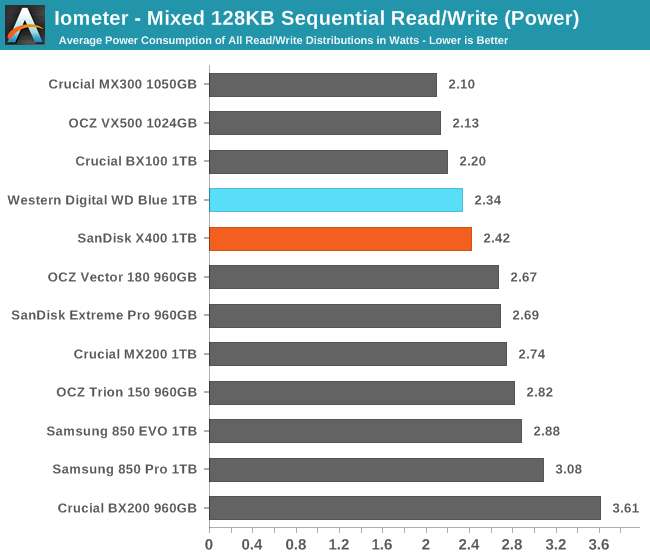
In absolute terms the WD Blue has pretty low power draw on this test, but the efficiency is not close to setting a record.
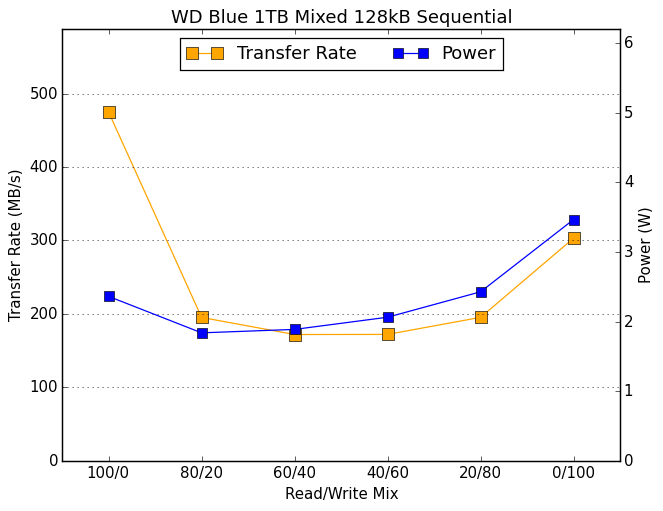 |
|||||||||
The WD Blue's U-shaped performance curve across this test is fairly typical, but the dropoff at the beginning is relatively steep and the minimum is a bit on the low side.










75 Comments
View All Comments
SeanJ76 - Thursday, October 20, 2016 - link
You couldn't pay me to use a Samsung SSD, not after their S7 ordeal and their screw up on SSD firmware update earlier this year....Bullwinkle J Moose - Friday, October 21, 2016 - link
Never heard of the firmware screwup earlier this yearPlease provide a link
and how exactly did the S7 ordeal affect the quality of their new SSD's
I'd love to hear more!
LMF5000 - Tuesday, March 28, 2017 - link
What I'm seeing in this article is that the Samsung drives vastly outperform everything else (by a factor of 1.5x to 2x in almost all the tests) except for power draw, and yet the price difference is almost negligible (right now my favourite shop is selling the WD blue 250GB for €95.99 and the Samsung 850 Evo for €109.99). Why would anyone buy the WD over the Samsung?